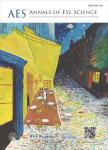Orthokeratology for myopia control: an optometrist’s view
作者机构:School of Optometry and Vision ScienceUniversity of New South WalesSydneyAustralia
出 版 物:《Annals of Eye Science》 (眼科学年鉴(英文))
年 卷 期:2018年第3卷第1期
页 面:110-118页
学科分类:08[工学] 080502[工学-材料学] 0805[工学-材料科学与工程(可授工学、理学学位)]
基 金:Australian Research Council ARC
主 题:Orthokeratology myopia control myopia correction reverse geometry lenses microbial keratitis axial eye growth individual variability
摘 要:Orthokeratology(OK)is a clinical technique that uses reverse geometry design rigid contact lenses to reshape the corneal profile and modify its refractive power during overnight lens wear in order to correct refractive error *** achieves its reshaping effect through thinning of the central corneal *** raises concerns about the safety of this modality particularly in terms of microbial keratitis(MK).Since the mid 2000’s,with our increasing understanding of modifiable risk factors for MK in OK the prevalence of MK appears to have reduced *** is now clear that the relative risk of MK in overnight OK is equivalent to other modalities of contact lens wear,provided that safe practice is followed in terms of lens fitting,wear and *** OK was originally used predominantly for correction of low to moderate myopic refractive error,its use for myopia control have become more common in recent *** follows on from published clinical trials demonstrating an average of approximately 45%reduction in axial eye elongation when overnight OK is used in progressive myopic *** there is significant individual variability in efficacy,and one of the current challenges for OK in myopia control is to identify those children who will benefit most from this particular *** OK lens parameters to customise corneal reshaping for enhanced myopia control efficacy also remains a significant challenge for the future of this modality.



